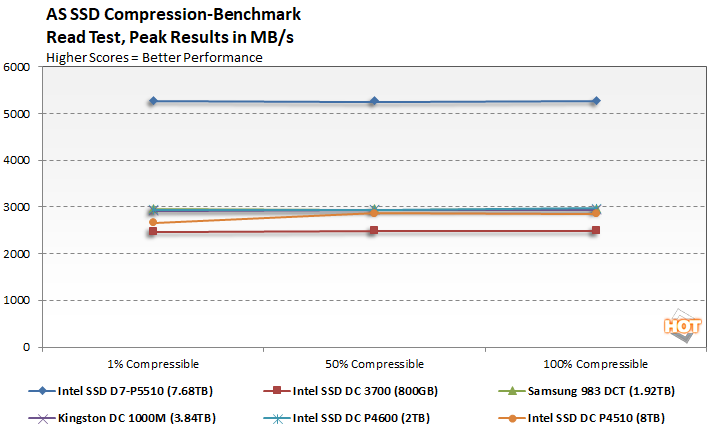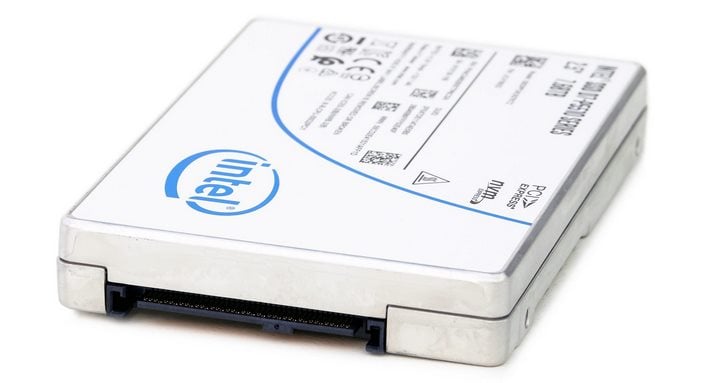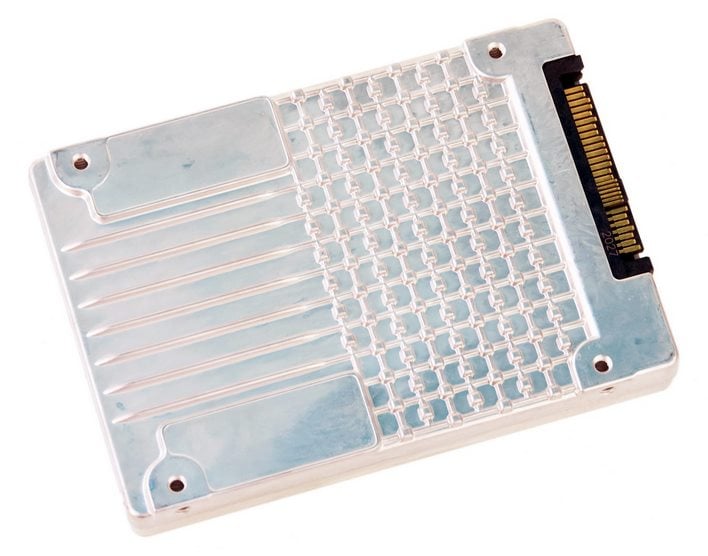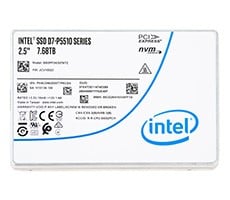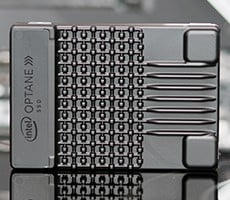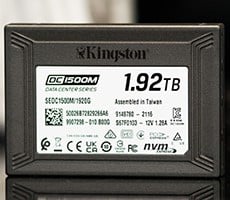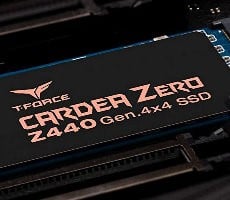Intel SSD D7-P5510 Review: Ultra-Fast PCIe 4 Enterprise Storage
The Intel SSD D7-P5510 series is significant step forward versus the older SSD DC P4600s. These new drives feature updated, native PCIe Gen 4 controllers and the latest 144-later TLC NAND, along with highly-optimized and re-tooled firmware to boost performance across the board. Take a look at the Intel SSD D7-P5510 series’ high-level features and specification below and then we’ll dive in a little deeper, see what makes these drives tick, and evaluate performance in a variety of benchmarks...
|
The Intel SSD D7-P5510 series drive we’ll be showing you here today leverage the U.2 2.5” x 15mm form factor and will be offered in 3.84TB and 7.68TB capacities – we’ve got the big-boy on tap for you here.
At the core of these drives is Intel’s own EAX-34144 native, PCIe Gen 4 NVMe controller paired to 144-layer TLC 3D NAND and freshly-tuned and optimized firmware to provide improved latency and throughput, with more consistent QoS as well. Moving to the newer 144-layer 3D TLC NAND flash memory on these drives not only allows Intel to provide high capacities and improve the maximum storage density per server, but it also minimizes power consumption; peak power under load is <18 watts with these drives and they idle below 5 watts.
Inside the aluminum chassis, which also act as effective heatsinks that’s to their integrated fins, in addition to the controller and NAND, these drives feature some DRAM (8GB in the case of the 7.68GB model) and capacitors that enable full power-loss protection. Like Intel’s other data-center targeted SSDs, D7-P5510 drives offer end-to-end protection from silent data corruption and include 5-year warranties, with an endurance rating of 1 full drive write per day (up to 14 PBW). We should also mention that the drives offer support for dynamic multiple namespaces, enhanced LBA, scatter gather list as well.
In terms of throughput, the highest capacity 7.68TB SSD D7-P5510 is rated for 7GB/s reads with 4.2GB/s writes. As you’ll see in just a bit, the drive is absolutely capable of hitting these speeds…
Intel SSD D7-P5510 Test Setup And Benchmarks
Under each test condition, the SSDs tested here were installed as secondary volumes in our testbed, with a separate drive used for the OS and benchmark installations. Our testbed's motherboard was updated with the latest BIOS available at the time of publication and drives were left blank without partitions for some tests, while others required them to be partitioned and formatted. Windows firewall, automatic updates, and screen savers were all disabled before testing and Windows 10 Quiet Hours / Focus Assist was enabled to prevent any potential interruptions.
In all test runs, we rebooted the system, ensured all temp and prefetch data was purged, waited several minutes for drive activity to settle and for the system to reach an idle state before invoking a test. All of the drives featured here were tested with their own NVMe drivers installed where possible / available, but the default Windows 10 NVMe driver was used when a proprietary driver was unavailable. Also note, this is the first PCIe Gen 4 data center SSD we've gotten our hands on, so the bandwidth available to the Intel SSD D7-P5510 is effectively double that of the PCIe Gen 3 drives we used for reference comparisons.
|
| Processor - Motherboard - Video Card - Memory - Audio - Storage - |
AMD Ryzen Threadripper 3990X MSI TRX40 Creator (TRX40 Chipset) GeForce RTX 2080 Ti 32GB G.SKILL DDR4-3200 Integrated on board Corsair MP600 (1TB) - OS Drive Intel SSD D7-P5510 (7.68TB) Intel SSD DC-P4600 (2TB) ntel SSD DC-P3700 (800GB) Samsung SSD 983 DCT (1.92TB) Intel SSD DC P4510 (2TB) Kingston DC1000M (3.84TB) |
OS - Chipset Drivers - DirectX - Benchmarks - |
Windows 10 Pro x64 (1v909) AMD v2.04.28.626 DirectX 12 IOMeter 1.1 HD Tune v5.75 ATTO v4.01.0f2 AS SSD CrystalDiskMark v7 x64 SiSoftware SANDRA 2021 |
|
In the following tables, we're showing two sets of access patterns; a custom Workstation pattern, with a 128K transfer size, consisting of 80% reads (20% writes) and 80% random (20% sequential) access and a 4K access pattern with a 4K transfer size, comprised of 67% reads (33% writes) and 100% random access. Queue depths from 1 to 32 were tested...
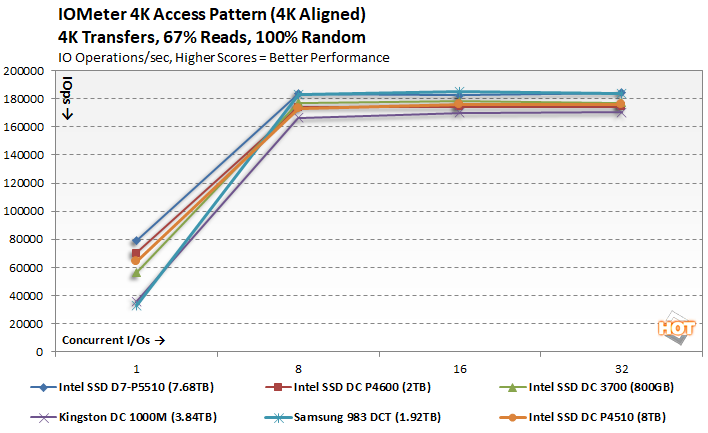

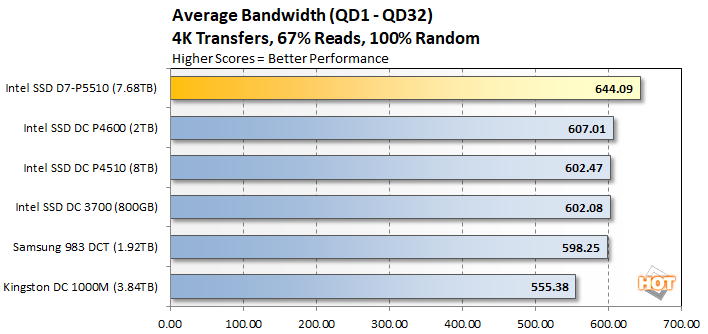
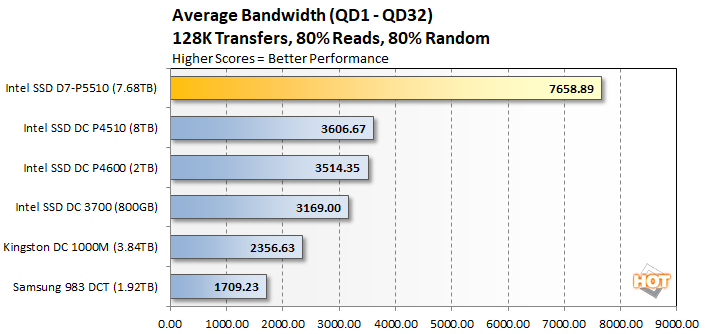
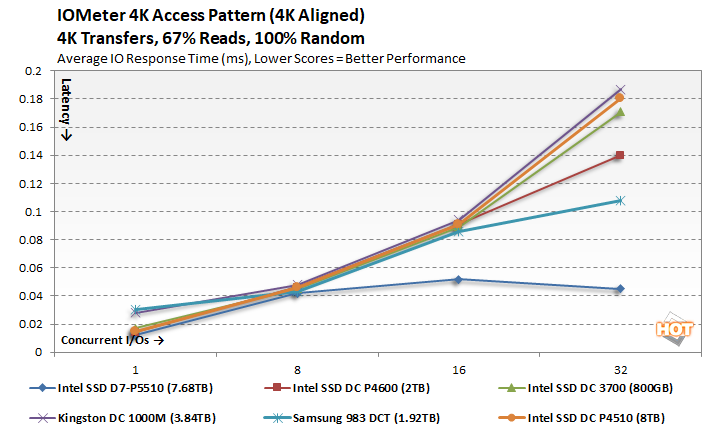
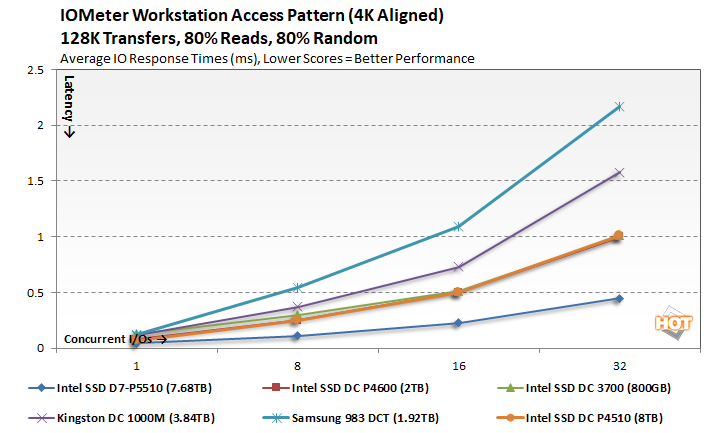
|
ATTO is straightforward disk benchmark that measures transfer speeds across a specific volume length. It measures raw transfer rates for both reads and writes and graphs them out in an easily interpreted chart. We chose .5KB through 64MB transfer sizes and a queue depth of 6 over a total max volume length of 256MB. ATTO's workloads are sequential in nature and measure raw bandwidth, rather than I/O response time, access latency, etc.
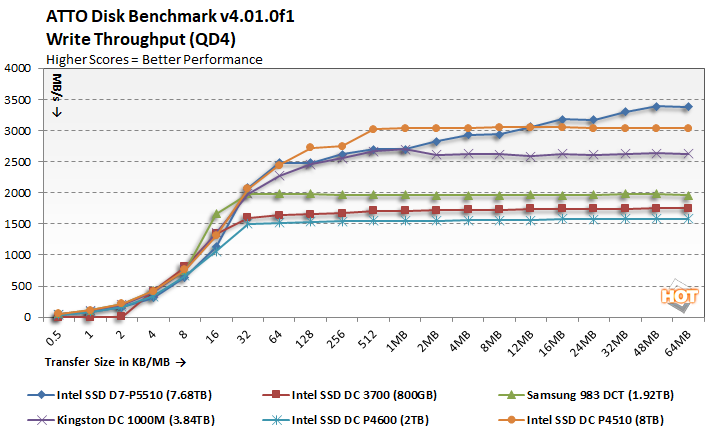
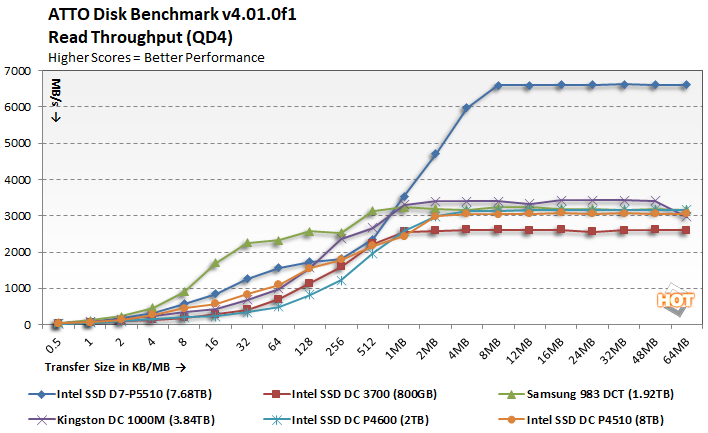
The Intel SSD D7-P5510's write throughput was in-line with some of the faster drives here, until it hit the larger transfer sizes and pull away a bit. In the read test though, the Intel SSD D7-P5510 obviously crushed the PCIe Gen 3 drives and approached it's 7GB/s rating.
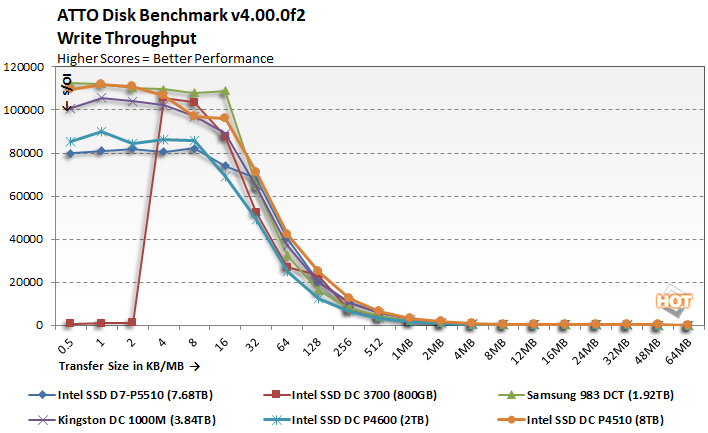

Peak IOs trailed most of the other drives according to ATTO's read test, but it's only the Samsung drive that offered higher IOs in the write test.
|

|
Next up we ran the Compression Benchmark built-into AS SSD, an SSD specific benchmark being developed by Alex Intelligent Software. This test is interesting because it uses a mix of compressible and non-compressible data and outputs both Read and Write throughput of the drive. We only graphed a small fraction of the data (1% compressible, 50% compressible, and 100% compressible), but the trend is representative of the benchmark’s complete results.
